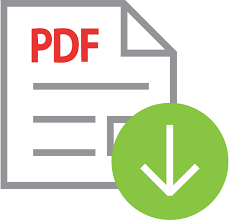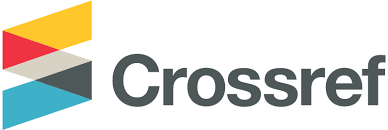Figurative Language in Karla Kukin’s Children Poems (1980) with Surrounding and Animals Theme
 ), Leni Marlina(2),
), Leni Marlina(2), (1) Universitas Negeri Padang
(2) Universitas Negeri Padang
 Corresponding Author
Corresponding Author
Copyright (c) 2023 Marta Rotua Sitohang
DOI : https://doi.org/10.24036/ell.v12i2.120869
Full Text:
 Language : english
Language : english
Abstract
Figurative language is a way of conveying a message using the beauty of language. The use of figurative language is usually found in casual conversation, novels, poems, song lyrics, speech, and poems. This study aims to investigate the types of figurative language in selected children’s poetry compiled by Sylvia M. Vardell (2020). This research focused on the types of figurative language and the meaning of those figurative lines. The method of this research is the descriptive qualitative method. The object of this research is the figurative lines from selected 5 poems with Family and Friends theme. The researcher also made a conclusion about the most frequent types at the end. To achieve the goal of this research, the researcher employed the theory from Laurence E. Rozakis (1995) about the types of figurative language. Thus, from 43 data, the findings show that there are 12 occurrences of hyperbole, 18 occurrences of metaphor, 1 occurrence of simile, 2 occurrences of ambiguity, 5 occurrences of personification, three occurrences of synecdoche, and 2 occurrences of allegory. The researcher finds a conclusion about the most dominant type in this research, which is metaphor.
Keywords
References
Abrams, M. H. (2012). A Glossary of Literary Terms (10th ed.). Boston: Wadsworth Cengage Learning.
Aryawan, L. P. K. F., Suranjaya, I. W., & Swandana, I. W. (2019). A SemanticAnalysis of Figurative Language Found in Eminem’s Song. Lingua Scientia,26(2),95–105.
Dewi,E.N.F.,Hidayat,D.N.,&Alek,A.(2020).Investigating figurative language in “Lose You to Love Me” song lyric. Loquen: English Studies Journal,13(1),6–16.
Hunt, P. (1996). An Introduction to Children's Literature. Oxford: Oxford University Press.
Fitria, T. N. (2018). Figurative language used in one direction’s album entitled Up AllNight. ELITE, 5(01). Accessed from https://bit.ly/3RntF4r
Hulu, D. A., Sembiring, E. N., &Tarigan, N. W. P. (2021). An Analysis of Figurative Language in Ariana Grande’s Album “Thank U, Next”. Linguistic, English Education and Art (LEEA) Journal, 4(2), 317-327. Accessed from https://bit.ly/3cxrQ68
Kuskin, K.(1980). Dogs& Dragon Trees &Dreams.Canada by Fitzhenry & Whiteside Limited,Toronto.
Moleong,L.J.(2009).Metodologi Penelitian Kualitatif. Bandung: Remaja Rosdakarya.
Nurhaida, N., & Marlina, L. (2017). An Analysis of Figurative Language in Views (Opinion Column) of Online Padang Ekspres. English Language and Literature, 6(1). Accessed from shorturl.at/qvZ57
Oyesomi, K. O., & Salawu, A. (2019). Assessing the uniqueness of indigenous language in advertising: Analysis of figurative language used in selected telecommunication Yoruba advertisement in Nigeria. The Qualitative Report, 24(10), 2574-2591. Accessed from https://bit.ly/3CImMqa
Rozakis, L. E. (1995). How to Interpret Poetry. New York: A Simon and Schuster Macmillan Company.
Siallagan, S. R., Manurung, S., & Sinaga, J. B. (2017). Analysis of figurative language and imagery in Taylor Swift's songs. ANGLO-SAXON: Journal of the English Language Education Study Program, 8(1), 55-67. Accessed from https://bit.ly/3pUGx6j
Wibisono, R. T., & Widodo, P. (2019). An analysis of figurative language in online short story posted on The Jakarta Post. LINGUISTIK: Jurnal Bahasa dan Sastra, 4(2), 62-72. Accessed from https://bit.ly/3pXFvqd
 Article Metrics
Article Metrics
 Abstract Views : 139 times
Abstract Views : 139 times
 PDF Downloaded : 58 times
PDF Downloaded : 58 times
Refbacks
Copyright (c) 2023 Marta Rotua Sitohang

This work is licensed under a Creative Commons Attribution-NonCommercial 4.0 International License.












